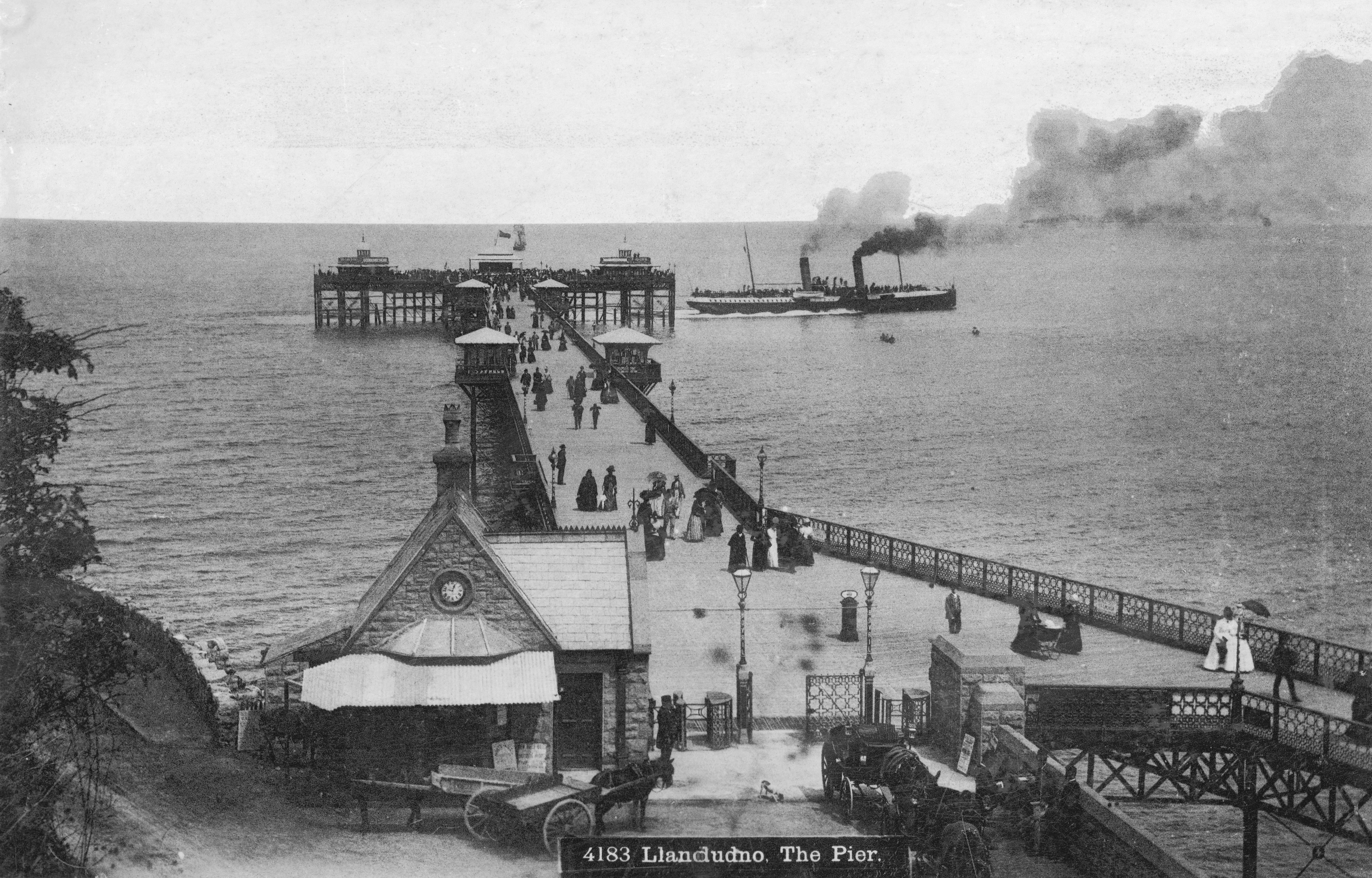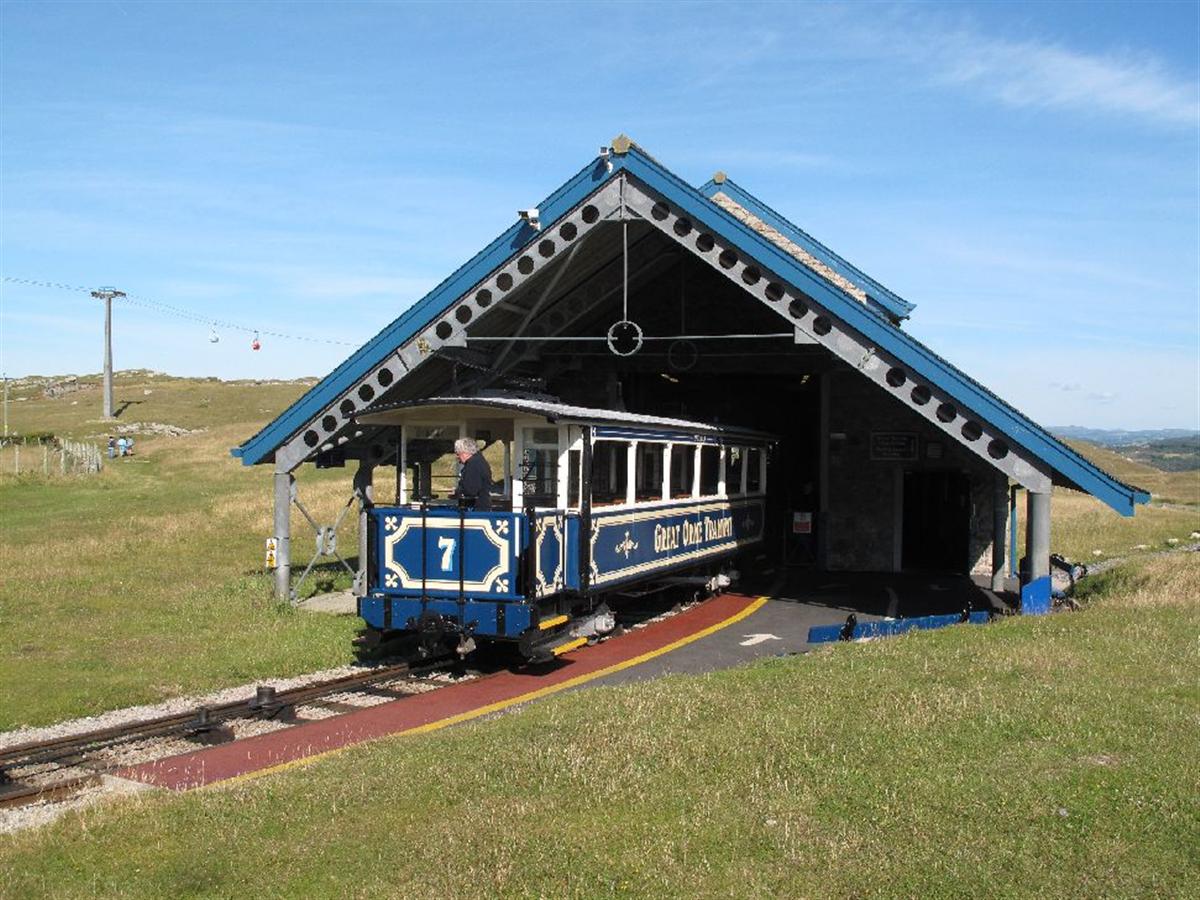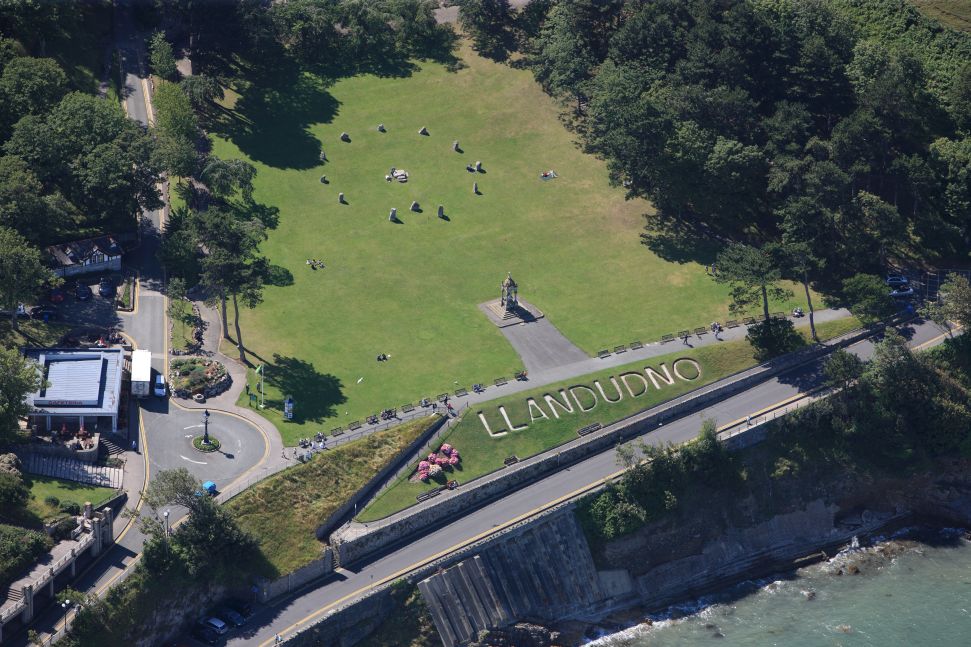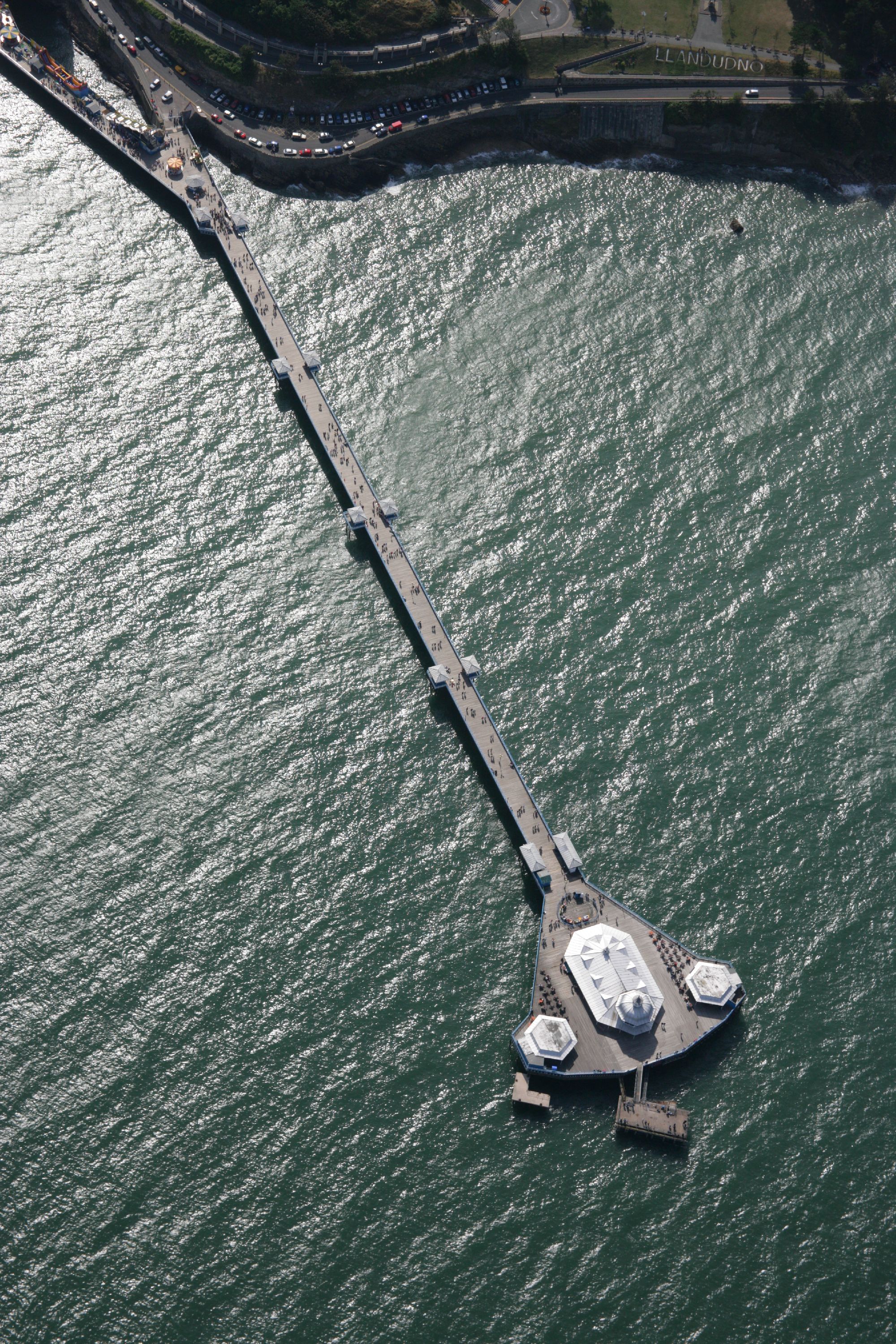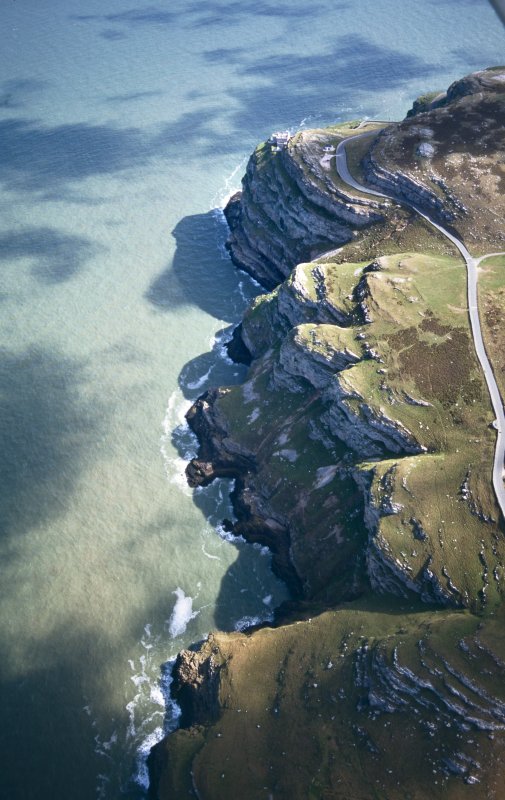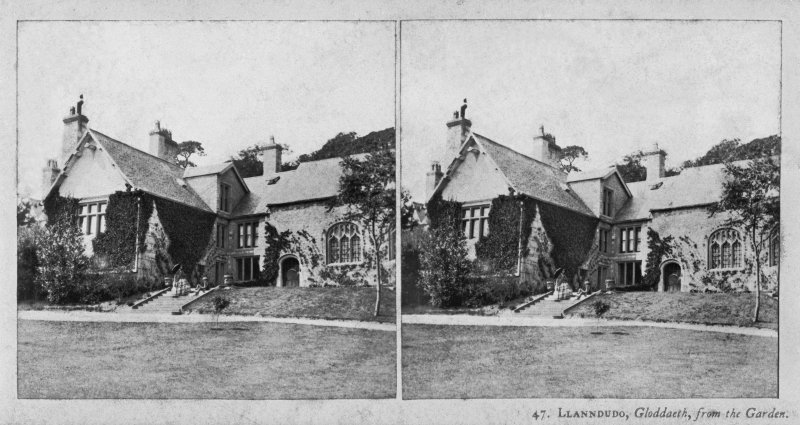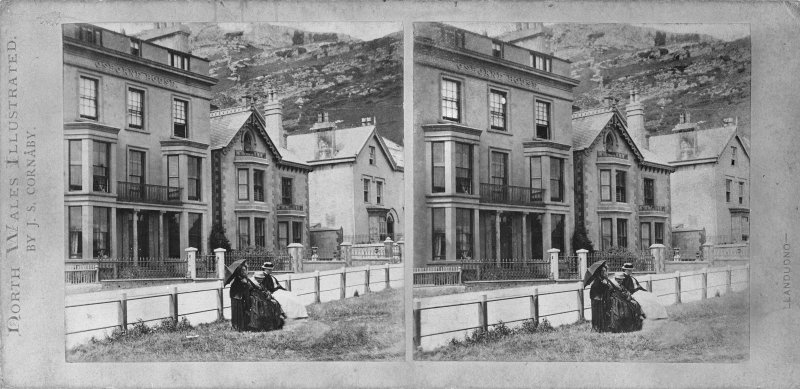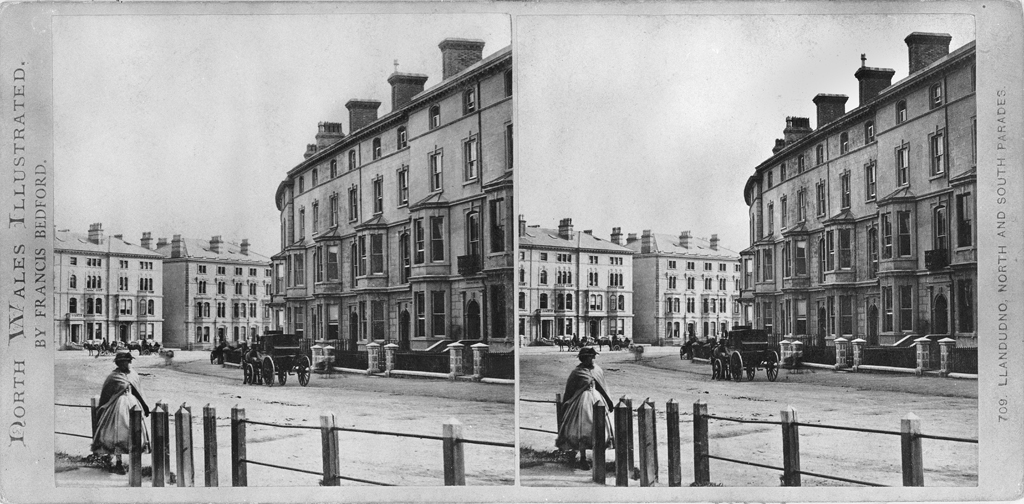Llandudno - Overview
Llandudno takes its name from the sixth-century church of St Tudno on the Great Orme. According to tradition St Tudno was the son of Seithenyn, the legendary, and irresponsible, king of Cantre’r Gwaelod, the drowned kingdom under Cardigan Bay. There is evidence for Neolithic settlement in the area, and copper mining on the Orme was taking place as early as the Bronze Age, but the Llandudno’s origins lie in the establishment of the Mannor of Gogarth for the Bishop of Bangor in 1284. Until the late 1840’s, Llandudno existed as a small fishing and mining village and its rise to prominence is owed to the development of seaside tourism.
In 1846, a new resort town was proposed and from 1849 the Mostyn family, who held enclosed land along the bay, leased plots to prospective developers. With the arrival of the railway in 1850’s, hotels sprung up along the sea-front and a large pier was built in 1858. In 1902, the tram system was developed and The Grand Hotel, at that time the largest hotel in Wales, was built. To this day, Llandudno’s grid-like layout is evidence of the modern development of this fashionable holiday resort.
With its white beach, picturesque views from the Great and Little Orme across the bay and easy access to Snowdonia, the town drew an international crowd from that start. In a letter dating from 1859, holiday-maker Gottfried Kinkel from Germany reported to have been the first person to swim across Llandudno Bay in an hour and fifty minutes. The Queen of Romania, Elisabeth von Wied, visited in 1890. Growing up, she had been introduced to Welsh poetry by her tutor, the polyglott Georg Sauerwein. During her five-week stay in Llandudno, she participated in the festivities of the National Eisteddfod that year under her pseudonym ‘Carmen Sylva’. According to local legend, Llandudno’s town motto ‘hardd, hafan, hedd’ derives from her description of Wales as ‘beautiful haven of peace’.
Accounts of Travel
"Aus dem Berglande von Wales", c. 1900
Sophie Döhner (1844 – 1933)
Da keine Tram am Sonntag auf den Great Orme führte, spazierte ich zu Fuß hinauf und freute mich der weiten Rundsicht; ich sah von oben viele Menschen nach einem kleinen Kirchlein unterhalb des Gipfels strömen, das an der Stelle der einstigen Einsiedelei des heil. Tudno liegt, der dem Ort seinen Namen hinterlassen hat, und erfragte, daß hier Gottesdienst im freien gehalten werden würde. Gern schloß ich mich demselben an und verlebte eine weihevolle Stunde angesichts des weiten, blauen Meeres hier oben auf der Höhe zwischenden alten Grabsteinen, und ganz mit dem Prediger übereinstimmend, daß wir nie auf die passende zeit warten sollten, sondern um Gutes und Rechtes zu tun, sei es stets convenient time! Zum Glück erstreckte sich die Heilighaltung des Sonntags nicht auf das Einstellen der Coach-Fahrten rund um die beiden Vorgebirge, hoch über der See dicht am Felsen entlang, die sehr schöne Rundsichten boten. Dann saß ich lange am äußtersten Ende des 380 Meter ins Meer hinausgebauten Piers, der als Promenade dient, sah die Dampfer kommen und gehen, die Sonne die Küste vergolden, die Möwen über der blauen See schweben und hörte zuletzt ein prachtvolles geistliches Konzert in der großen Musikhalle auf diesem Pier. Das angrenzende Restaurant war aber des Sonntags wegen geschlossen, so daß ich meinen Hunger erst spät abends im Hotel stillen konnte.
As no tram went up the Great Orme on Sunday, I walked up there on foot and enjoyed the wide prospect. From the summit, I saw many people flock towards a small church immediately below which had been built in the location of former hermitage of St Tudno, who bequeathed his name to the town, and I discovered that the service would be held in the open air. Gladly I joined the congregation and spent a blessed hour here on the mound amongst gravestones and surrounded by the wide, blue sea. I agreed entirely with the preacher that we should never wait for the right time, because it is always a convenient time for doing good and being just! Luckily the observance of holy Sunday did not extend to the termination of coach excursions around the two foothills, closely hugging the rock high above the sea, which offered beautiful panoramic views. Later I sat for a long time on the far end of the 380 metre long pier, which serves as a promenade, and watched the steamships come and go, saw the sun gild the coast and the sea gulls float above the blue sea before, finally, listening to a grand spiritual concert in the large pavilion on this pier. As it was Sunday, however, the adjacent restaurant was closed and I could appease my hunger only late in the evening in my hotel.
Medicinische Reisebriefe aus England und Holland, 1866
Heinrich Rohlfs (1827 – 1898)
Llandudno liegt höchst malerisch an dem Meerbusen, der von den beiden Vorgebirgen, dem großen und kleinen Ormeshead gebildet wird. Die Entfernung zwischen beiden Vorgebirgen beträgt vielleicht eine halbe Stunde. Da unsere Wohnung schon vorher bestellt war, so nahm unsere Einrichtung keine lange Zeit in Anspruch. Wir machten dann einen Spaziergang durch die Stadt. Man sieht eigentlich lauter große dreistöckige Häuser, nur selten einige kleinere. Die Straßen sind sehr breit und schön angelegt. Die Hauptläden, größtentheils sehr elegant, befinden sich in der, die Mitte der Stadt durchkreuzenden, Straße. Nur wenige von diesen Häusern sind auch im Winter bewohnt. Ein Seebad bedeutet in England etwas Anderes als in Deutschland, wo hauptsächlich die Niederdeutschen, die in nicht gar zu großer Entfernung davon wohnen, die Seebäder frequentiren, oder wo zugleich wirkliche Patienten aus dem Oberlande das Contigent liefern. Die Engländer, als Insulaner, betrachten es auch in den von der Küste entfernten Districten als ein Bedürfniß, wenigstens einige Wochen im Jahre den Anblick des Meeres zu genießen. Daher giebt es in England an allen Küsten unzählige Seebadeplätze. Wer aus dem Innern des Landes es nur irgend leisten kann, geht im Sommer in’s Seebad. Wenn nun auch Brighton in Bezug auf Mode und Eleganz, und Margate in Bezug auf die Zahl der Besucher den ersten Rang einnehmen, so gebührt nach dem einstimmigen Urtheil aller Engländer, in Rücksicht der Naturschönheiten, Llandudno die Palme. Mit Stolz nennen es die Bewohner das Brighton von Wales.
Llandudno is picturesquely situated on the bay that is created by two foothills, the Little and the Great Orme’s Head. The distance between those two promontories is perhaps half an hour. As we had reserved our apartment, it did not take long to settle in. We then went for a walk through the town. There are many three-storeyed buildings and only very rarely some smaller ones. The streets are very broad and well maintained. The main shops, most of them very elegant, are situated along the street which crosses the town in its centre. Only very few of these houses are also inhabited in winter. For the English a seaside resort means something different than what it means in Germany, where largely north Germans who live at not too great a distance frequent these seaside resorts or where genuine patients from the uplands make up the clientele. As islanders, the English even in the non-coastal districts consider it as a necessity to enjoy the view of the sea at least for a couple of weeks every year. It is for that reason that there are countless seaside resorts along the English coast. Whoever from the inland can afford it, visits the sea in summer. Although Brighton takes the top position where fashion and elegance are concerned and Margate in terms of visitor numbers, Llandudno, according to the unanimous verdict of all the English, deserves the Golden Palm regarding its natural beauties. The locals proudly call it the Brighton of Wales.
"Voyage au nord du pays de Galles", c. 1866
Arthur d’Arcis ( – )
La ville de Llandudno, 6651 habitants, est à 6 kilomètres de Llandudno Junction. Admirablement bâtie, aux magasins élégants et aux hôtels princiers, Llandudno est l’enfant gâté de l’artistocratie anglaise. Aussi la vie y est très chère. Comme station de bains de mer, elle me semble décidément inférieure à Rhyl parce que la plage y est étroite et caillouteuse, et la Parade qui la borde petite et mesquine. Mais cet inconvénient est racheté par les plaisirs qu’offre la montagne. Les deux promontoires, le Great Orme’s head et le Little Orme’s head, sont en effet deux montagnes qui, quoique peu élevées, offrent de charmantes promenades et même des difficultés qui donneraient à réfléchir à plus d’un alpiniste. La ville se déploie entre les deux promontoires, mais surtout au pied du Great Orme’s head. On y grimpe par un sentier vertigineux et l’on ne tarde pas à perdre la tête au milieu de cet entassement monstrueux de blocs et de débris. Une route très pittoresque le contourne.
The town of Llandudno, with 6,651 inhabitants, is 6 kilometres from Llandudno Junction. Admirably built, with elegant shops and princely hotels, Llandudno is the spoilt child of the English aristocracy. Also the cost of living there is very expensive. As a seaside resort it strikes me as clearly inferior to Rhyl because its beach is narrow and shingly, and the Parade that runs along it is small and measly. But this disadvantage is compensated by the pleasures offered by the mountains. The two promontories, the Great Orme’s Head and the Little Orme’s Head are in fact two mountains which, though not the highest, nevertheless offer charming walks and even some degree of challenge for the experienced mountaineer. The town is spread out between the two promontories, but particularly at the foot of the Great Orme’s Head. A dizzying path climbs up it and you soon lose your head among this monstrous heap of blocks and debris. A very picturesque route runs around it.
"Au pays de Galles", c. 1900
Firmin Roz (1866 – 1957)
Llandudno est une de ces sea-resorts que vantent les guides illustrés. Elle ressemble à toutes les stations anglaises de bains de mer : régulière, insignifiante et neuve, avec trop de boutiques, trop de maisons à louer, trop de temples. ... J’arrivai à la plage. Elle déploie l’amplitude de son demi-cercle géant entre deux caps: Little Orme’s Head, ondulé en colline là-bas, vers l’est; et Great Orme’s Head, dont la silhouette lourde domine la côte et tombe, brusquement coupée, dans la mer. On peut contourner sa base par une route taillée en contre-bas qui offre une merveilleuse promenade ouverte sur le large, Marine Drive. Je m’y engageai dans le vent. Le soleil, vif au ciel nuageux, jouait sur l’ondulation glauque des flots et la nuançait de vert, d’ardoise et de mauve, avec de scintillantes traînées d’argent. Par delà cette étendue changeante, c’est, à l’ouest, Anglesey et l’Irlande, au nord, les Highlands gaëliques d’Écosse, le fabuleux domaine du Roi des Iles, dont la gloire emplit les poèmes d’Ossian. Je suis au centre de ce monde celte, obstiné à vivre et qui garde le souvenir légendaire d’une grandeur dont son imagination n’a pas fait tous les frais. Que pourrais-je en retrouver ici? C’est ce que je me demande déjà dans ce paysage qui l’évoque si bien, à quelques pas de cette ville qui le rappelle si mal.
Llandudno is one of those sea resorts that are promoted by illustrated guides. It resembles all the English seaside bathing resorts: regular, insignificant and new, with too many shops, too many houses for rent, too many places of worship. ... I arrived at the beach. It generously spreads its gigantic semi-circle between two headlands: Little Orme’s Head, in an undulating hill over there in the east; and Great Orme’s Head, whose heave silhouette dominates the coastline and falls abruptly into the sea. You can skirt around its base on a road hewn from the rock down below that offers the most marvellous walk, open to the sea: Marine Drive. I set out on it in the wind. The sun, vivid in the cloudy sky, played on the dull-looking waves, throwing shades of green, slate and mauve on them, with glittering streaks of silver. Beyond this changing expanse, to the west lie Anglesey and Ireland, to the north the Gaelic Highlands of Scotland, the legendary domain the of the King of Islands, whose glory fills the poems of Ossian. I am at the centre of this Celtic world, that is so determined to live on, and which retains a legendary grandeur that continues to feed its imagination. What traces of it could I find here? That is the question I ask myself in this landscape that evokes it so well, a few steps away from this town that does not recall it at all.
